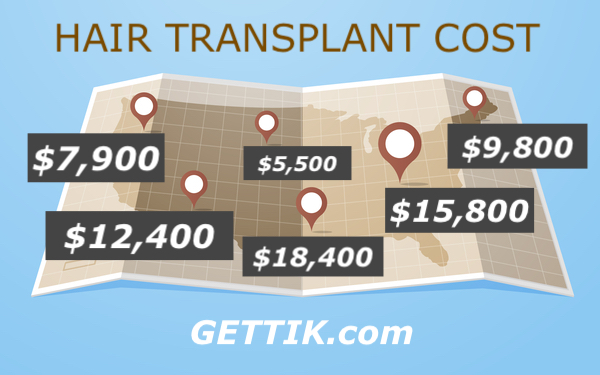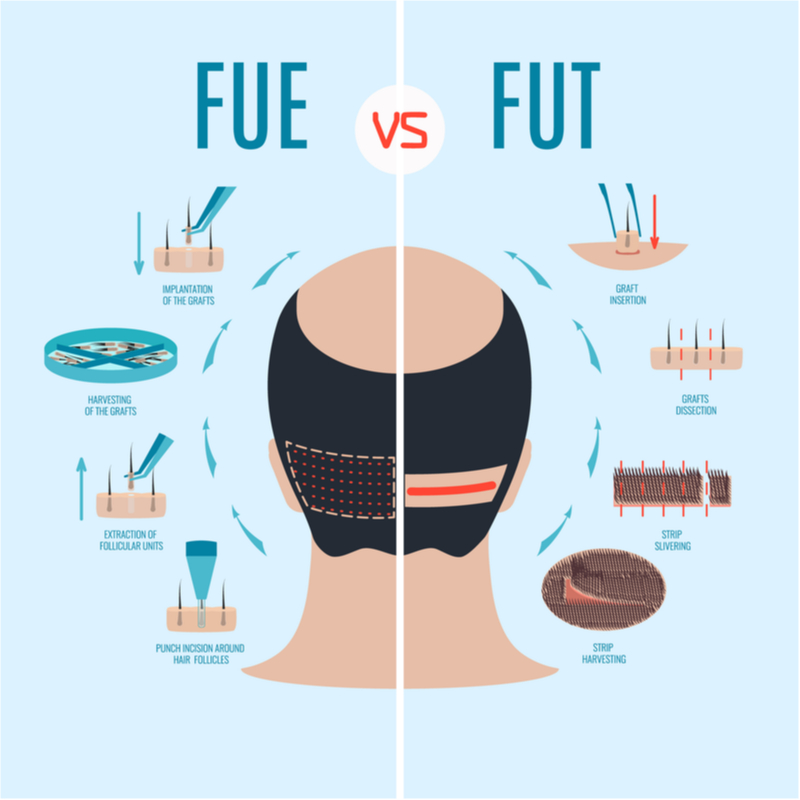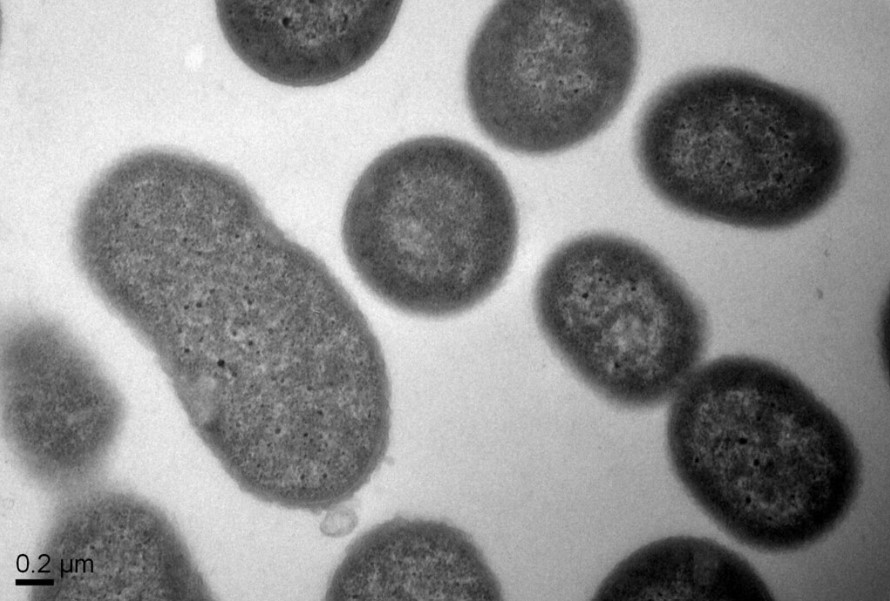How did Elon Musk grow his hair back? 6 Options
If you are currently reading this article, you’ve probably noticed that Elon’s hair has changed quite a lot and looks

Around one in every three men experience hair loss or male-pattern baldness by the age of thirty. For a successful hair transplant procedure to be planned, clearly it is significant that the candidate must have enough hair left on their head to be transplanted. Many things are taken into account before deciding if a hair transplant surgery is right for you.
To further evaluate if someone is a good candidate for hair transplant surgery, it is important to consult a specialist. Thorough planning with the surgeon is vital in deciding the plan of action for reaching the desired goal.
However, a hair transplant is not an effective method of restoration for someone who is experiencing hair loss as a side effect of a medication or an ongoing chemotherapy sessions, is no longer in the early stage of hair loss rather has widespread hair loss and thinning or has had multiple injuries in the scalp from the past, or has keloid formation from injuries or surgeries which has led to thickening of the scalp. Hair restoration surgery may also not work for women who have a widespread loss of hair throughout the scalp.
Sometimes, hair transplant falls out of the equation for a sufferer so there are several hair alternatives to hair transplant that can be considered for hair regrowth. These are non-invasive methods that are safe as well as effective and reliable. Most of these work best for preserving and recovering thinning hair. Some of these non-surgical alternatives include:
Solve thin hair immediately. The visible scalp will disappear instantly.
Especially in those who have just begun to lose hair, minoxidil has proven to be effective. This over-the-counter medication is used as a topical treatment. Usage of this medication has only shown to slow down the process of hair loss in those who have just started to lose hair. This has been used for the treatment of male or female patterns of baldness, also called androgenic alopecia (95% of all hair loss type). This drug is considered as a vasodilator and it works by improving the circulation of blood around the follicles that have started to shrink. Hair regrowth via this method is rare but this has shown to be most effective in people who are under forty years of age.
It is not recommended to use this drug if one is under the age of eighteen, does not have a family history of hair loss, has a scalp that is itchy, infected or painful, or if the hair loss is the result of different hair grooming methods like cornrowing or chemicals. It is also not recommended to use minoxidil if one is experiencing hair loss because of another condition like thyroid disease or nutritional deficiencies.
It has a wider range of functions and applications than minoxidil but it is, nonetheless, more expensive. A popular 1mg dosage form is available to be taken once per day. It works by blocking the production of dihydrotestosterone (DHT) and therefore interrupts the process by which follicles begin to produce thinner hair and one experiences hair loss. This drug, however, is taken as a pill and is prescription-only. But it has several side effects such as the increased risk of prostate cancer, headache, impotence, loss of libido, irregular heartbeat, and skin rash. Users of this drug must undergo regular monitoring by blood tests.
Although the time taken for medicinal treatment to show any improvement takes longer than the surgical procedures in showing results and only by continuous use signs of improvement appear, the use of medicines especially for early phases of hair loss means that cost is typically lower than any surgical procedure.
Especially in those who have just begun to lose hair, minoxidil has proven to be effective. This over-the-counter medication is used as a topical treatment. Usage of this medication has only shown to slow down the process of hair loss in those who have just started to lose hair. This has been used for the treatment of male or female patterns of baldness, also called androgenic alopecia (95% of all hair loss type). This drug is considered as a vasodilator and it works by improving the circulation of blood around the follicles that have started to shrink. Hair regrowth via this method is rare but this has shown to be most effective in people who are under forty years of age. It is not recommended to use this drug if one is under the age of eighteen, does not have a family history of hair loss, has a scalp that is itchy, infected or painful, or if the hair loss is the result of different hair grooming methods like cornrowing or chemicals. It is also not recommended to use minoxidil if one is experiencing hair loss because of another condition like thyroid disease or nutritional deficiencies.
It has a wider range of functions and applications than minoxidil but it is, nonetheless, more expensive. A popular 1mg dosage form is available to be taken once per day. It works by blocking the production of dihydrotestosterone (DHT) and therefore interrupts the process by which follicles begin to produce thinner hair and one experiences hair loss. This drug, however, is taken as a pill and is prescription-only. But it has several side effects such as the increased risk of prostate cancer, headache, impotence, loss of libido, irregular heartbeat, and skin rash. Users of this drug must undergo regular monitoring by blood tests. Although the time taken for medicinal treatment to show any improvement takes longer than the surgical procedures in showing results and only by continuous use signs of improvement appear, the use of medicines especially for early phases of hair loss means that cost is typically lower than any surgical procedure.
Low-level laser therapy (LLLT) is another option for those suffering from hair loss. This merely improves the thickness of the hair shaft. It does not stop hair loss or does not promote the growth of new hair.
This latest technique generally works better when the patient has not completely lost their hair. This method is typically suitable for those who are in the early stages and do not require any surgical hair transplant procedure. This effectively works for hair thinning. This is a three-step process where a person’s blood is drawn, processed, and then injected into the scalp. 1. The patient’s own blood is taken out for this procedure, 2. and only the portion rich in plasma is processed out of the blood through the process of centrifugation. 3. This plasma-rich content is then injected in the scalp of the patient where the hair is thinning. This speeds up the process of tissue regeneration which is vital in the treatment of hair thinning. Because in this procedure, the patient’s own platelets are used, the side effects from this procedure and rate of rejection are very low. One downside is that the hair that grows and begins to appear as natural hair is extremely thin than what a surgical procedure of hair transplantation or restoration can provide.
Another reason why this non-surgical treatment alternative is not employed is that, although this procedure is cost-effective, the PRP therapy has to be maintained in the long-term in order to achieve desired results whereas, for hair transplant surgery on the other side can be carried out once for permanent effects, maintenance therapy is required every four to six months. Lastly, there has not been enough research done to prove that PRP is an effective hair restoration method and for which category of candidates can this procedure prove to be fruitful. Still a process involving injections always carries a risk of injuring a blood vessel or hitting a nerve, causing an infection and stimulating the buildup of scar tissue thickening the scalp skin at each round of therapy. Moreover, for someone who is suffering from cancer, is taking blood thinners regularly, is a heavy smoker or drinker, suffering from liver disease, has thyroid disease, or suffers from a genetic platelet dysfunction disorder, the Platelet-Rich Plasma therapy may be strongly not recommended.
Hair wigs are a common alternative for many men and women experiencing hair loss or baldness who are looking to hide patches of the scalp that are balding or balding patches. One needs to put on and take off the wig regularly and the styling options for putting on a wig are limited.
ATP transplant or Advanced Trico Pigmentation is another minimally invasive technique used to cater to the ones suffering from baldness or hair loss. The procedure is explained as tattooing with a tiny needle and ink to create the illusion of small length hair or stubble. The ink is of a special type that lasts for about five to seven years.
Above mentioned are different and cost-effective alternatives to hair transplantation surgeries for a candidate that does not qualify for a surgery or is worried about other factors. For natural-looking hair and desired results with an affordable procedure, it is always recommended that one must consult a specialist.
Hair transplant or restoration surgeries are on the rise but many factors contribute to deciding what works best for an individual. An in-depth understanding of what are the benefits and risks are involved in each process and what are the alternatives are required to reach a desirable outcome.
For someone who’s considering a surgical method of hair transplantation, both FUE or FUT can be considered to achieve what the patient desires. The technology involved in both methods has advanced so much that both the males and the females can reverse the hair loss to such an extent that no one may even notice that one has been losing hair. However, there are some advantages and disadvantages of both hair restoration techniques that need to be put side-by-side and compared for a better and well-informed decision. Based on the individual’s need, lifestyle, and budget the decision has to be made by the patient to successfully reach their goal.

The main difference between FUE and FUT is the way that the graft is harvested from the scalp. Because of its intricate procedure, FUE is a more specialized technique of hair transplantation where precision is required to remove individual hair follicles and place it on the recipient site.
The bottom line is that the success of whichever procedure chooses depends on the number of good hair follicles they have left, what is the size of the recipient area that one wants to cover, and eventually, the skill of the hair transplant surgeon carrying out the procedure.
Both these techniques produce aesthetically pleasing results for anyone experiencing hair loss. Although both these types of techniques work in a similar way, there are some major changes and modifications in the process as the technology improves. These processes have been discussed in detail below to fully understand what a patient goes through and what are the different outcomes based on the techniques involved.
During the process of FUE, the scarring being uniformly spread across the donor site, usually the back of the head and the sides, it seems to be less scared.
✅ The scarring is almost negligible which is the most important advantage over other procedures for many clients. It is for this reason that the patients who have a shorter hair length are a good candidate for this technique since it does not require any stitching and there is no visible scarring.
✅ This technique results in rapid healing and minimal pain which leaves the patient with a more comfortable post-operative phase in comparison to FUT.
This technique is recommended for people with shorter hairstyles and for those who seek a lesser invasive procedure that is comfortable.
This option is also good for those candidates who have less hair on their donor site, which is usually the back of the head or have a very soft scalp. In such cases, the donor site for FUE is selected from arms, legs, chest, or back. With respect to the graft removed, the follicular removal using the FUE technique causes more trauma to the graft during the process in a way that most of the time the connective tissue is damaged and is usually not preserved because the direction of the hair under the skin can never be estimated. And since it is important to preserve the connective tissue attached with the hair follicle the yield from the extraction process in FUE, therefore, is always lower.
These lower quality hair follicles can not be used as donor’s hair because this damaged hair do not grow and are very susceptible to damage.
For this reason, FUE is never recommended in cases where more than a thousand or fifteen hundred grafts are required.
❌ And a major drawback of the FUE technique of hair transplantation is the cost of each graft being much higher than the FUT procedure since this procedure is more time and labor-intensive.
❌ Another downside of the FUE procedure is that since the procedure requires individual follicular units to be harvested, it may require multiple sessions to achieve desirable results.
FUT is often considered the gold standard for hair transplantation, where a single strip of donor hair is removed.
✅ In this procedure not only there are a minimized number of treatments but this treatment is also cost effective.
This is only recommended for people who have about half an inch of hair or longer.
Therefore, it is recommended for people who like to keep a longer length of their hair and desire for a cost-effective method of achieving it. Patients with weaker follicles and lack of donor availability may also be recommended FUT.
✅ Also, in FUT up to four thousand follicular units can be harvested and transplanted at one time.
Unlike FUE, this technique gives a larger amount of hair follicles to use from the donor site to the recipient site. This improves the chances of the surgeon to preserve the follicles and the connective tissue since the grafts are very carefully dissected out from the donor strip.
⚠️ This even depends on the skills of the surgeon performing the extraction of the follicles from the strip and is determined by how skilled he is in dissecting the follicles under the microscope.
❌ Considering the drawbacks of this procedure, FUT hair transplantation technique requires suturing and stitched closure at the donor site, this may cause a feeling of tightness and soreness for the patient.
❌ The patient may also experience numbness and itching. There is always a greater risk of contracting an infection and causing inflammation at the site from where the strip has been harvested. Stitches from this surgery need to be removed after about 10 days of surgery which leaves the scalp with a fine linear scar at the donor site. This may be concealed by the surrounding hair but the patient is left with a scar in their scalp at the end of this hair transplantation procedure.
One accepted method of hair transplantation is called Follicular Unit Extraction or FUE which is a multistep process starting from preparation of the client to preparation of the recipient site to implantation. This is the modern technique improved out of traditional hair transplant methods. In this hair transplant surgery, thorough planning is done to determine the donor site as well as the affected site and ways the most suitable hairline can be achieved. The donor site is then prepared by trimming down the hair for about two to three millimeters. Extensive shaving and trimming facilitate removal of the maximum number of grafts.
1. After administering local anesthesia to ensure the comfort of the patient undergoing a surgical procedure, a custom made patented punch-like instrument is used to isolate and then
2. remove each individual follicular unit under very high-powered magnification.
3. A follicular unit is a natural group of one to four hairs in which it grows where one follicular unit shares blood supply. This instrument usually does not exceed more than 1mm in diameter which leaves the extraction sites to be microscopic. This punch enables the doctor to carefully harvest viable grafts. Follicular Unit Extraction is also called the minimally invasive technique as this technique only affects the superficial layer of the skin. Once the hair follicles are removed, based on the predetermined planning, the donor grafts are placed in the incisions prepared at the receiving site using very fine forceps.
4. The recipient site is prepared by small incisions for which microblades are used for which even bandages are not necessary at the end. These blades range from 0.7mm to 1.3mm in width and are created for each patient based on their needs and desires. This procedure allows the doctor to transplant at densities of fifty grafts per square centimeter. And while the graft is being placed, these are preserved in saline under ideal conditions. This ends the procedure.
During the recovery phase, the healing is rapid in the FUE procedure.
The FUT, or follicular unit transplantation, is also known as follicular unit strip surgery (FUSS). This is another commonly employed hair restoration technique that involves transplanting a patient’s natural hair into balding areas. It was the dominant process all over the world before FUE took over and offered a more modern alternative. In the process of FUT hair restoration surgery, insightful planning is done to determine the design hairline and of the scalp for the most aesthetically pleasing results at the hairline. The donor site is then prepared by trimming it. The hair on the back of the head and side are usually strong and healthiest and more resistant to hair loss caused by hormonal changes, therefore, the donor sites are usually selected from these places for transplanting into balding areas of the scalp.
1. After administering a local anesthesia a strip of skin is then excised and the edges of the incision are sutured together. For this reason, this procedure is also called “strip harvesting”. The strip may be as long as six to ten inches but can also stretch from ear to ear.
2. Individual follicular grafts are then removed, sometimes even by using a microscope, and prepared out of the excised strip. As many as two thousand of these grafts are prepared and some of these grafts may have only one hair.
3. These are then transplanted into tiny individual incisions from front to back in the balding area based on the predetermined planning. Starting at the front of the hairline, the doctor makes the smallest incisions, and as he proceeds towards the back of the head, he places the grafts in a larger size so as to achieve the fullness pattern present with the natural hair. The skilled surgeons also ensure that the cuts on the recipient site are angled in a way so as to produce natural direction of normal hair. The surgical site is then covered with bandages or gauze.
Usually, this procedure takes about three to six hours. After about 10-12 days the stitches are removed and the scabbing is usually healed but during this time the patient may feel moderate soreness.
During the recovery process, FUT is more discomforting and has more downtime than FUE which may even take longer to heal completely. The pain felt postoperatively can also be treated by prescription medicine.
However, since the surgeon removes the whole strip all at once and the work is cut down, FUT surgery costs a lot less than FUE.
Time taken for both the procedures varies according to the number of follicles one is having harvested but usually, the average time taken is about eight hours. After the surgery, the surgical site is usually swollen, this may be managed by the surgeon by injecting a steroid such as triamcinolone to keep the swelling down. And to further avoid complications such as infection, doctors may also prescribe antibiotics.
Some of the side effects common for any hair transplant procedure are as follows:
Some of the best hair transplant clinics in the USA are Biltmore Surgical Hair Restoration and Bauman Medical where the patients have seen their demands and desires met after the hair transplant procedure. Patients at Bauman Medical have experienced hair restoration at the hands of leading surgeons, like Dr. Bauman himself to internationally accredited facilities ranging from hair transplantation, PRP therapies, and eyebrow and eyelashes restoration therapies. Another attractive feature is the extensive postoperative care plan. True and Dorin Medical Group is another hair restoration team that is made up of specialists with up to 2 decades of experience. They have their headquarters in Manhattan, NY where they have the reputation of delivering exceptional services using up-to-date and advanced procedures. Dr. True and Dr. Dorin themselves perform the surgeries and the assisting staff and team of physicians itself has members with decades of experience in successful grafting. Another popular hair restoration clinic is the Shapiro Medical Group that has been recognised on many international platforms. They charge per graft and for the first 2000 grafts they charge $5.50 which drops to $3.00 for graft over 2000 in the strip procedure. Certain money-saving deals and financial help is also available for patients who qualify and meet the criterion.
[drawattention ID=”238816″]
NOTE: Price we get from clinics are informative. Please contact clinic by clicking on the state to get exact price.
If you are currently reading this article, you’ve probably noticed that Elon’s hair has changed quite a lot and looks

How Does Swimming Affect Your Body? Individuals swim for a variety of reasons including recreation, competition, and health. Regardless of

Lifestyle Tips For Better Overall Health The way you go about your daily life has a massive and direct impact

How Do Infections Work and What Are Their Effects on the Body? From Hippocrates’s writings about the spread of disease

How To Make a Good Impression in a Job Interview When it comes to getting a job, interviewing may seem